Limited Quantities of larvae/juveniles/adults!
Limited Quantities of larvae/juveniles/adults!
Please give us at least 1 month notice if you know you will be needing any axolotls at 4cm or larger.
Limited Quantities of larvae/juveniles/adults!
Please give us at least 1 month notice if you know you will be needing any axolotls at 4cm or larger.
We are still continuing to see an increase in the number of orders we receive for larger larvae and juveniles. To try and meet the demands, we ask researchers to give us plenty of notice (1-3 months) before they actually need the large order. We generally have no problem meeting quantities of 30-50 larvae when they are requested at the 2-3cm size or hatchling. However, as the larvae get older, they need more space, thus more man-power to rear. When quantities greater than 15 are needed of one single color type, we will need to separate those individuals out from their usual larvae rack so that natural selection among our group-housed larvae doesn't naturally cull out the quantities we need. Therefore, we have instated Rearing Fees on these special request orders. If the customer cannot accept the smaller size currently available for his/her quantity needs (and then rear the animals at his/her own facility until the proper size), then we will special rear them here, ourselves. The fee for rearing small larvae (from 2-3cm size up to the 3-5cm size) is $2.00 per animal. The fee for rearing juveniles (from 3-5cm size up to 5-8cm or 8-12cm) is $5.00 per animal. Thank you for your understanding. If you have any questions, please feel free to email us anytime. Thank you!
Axolotls are one of the best animals to bring into classrooms, learning centers, and museums. Their unusual traits and charming behavior capture the attention of students of all ages, making them perfect for teaching science. These beautiful and durable Axolotl Aquaria include everything needed to rapidly set-up and integrate an axolotl into your learning environment, including the axolotl! Choose among the following options to tailor your Axolotl Aquarium for different learning experiences:
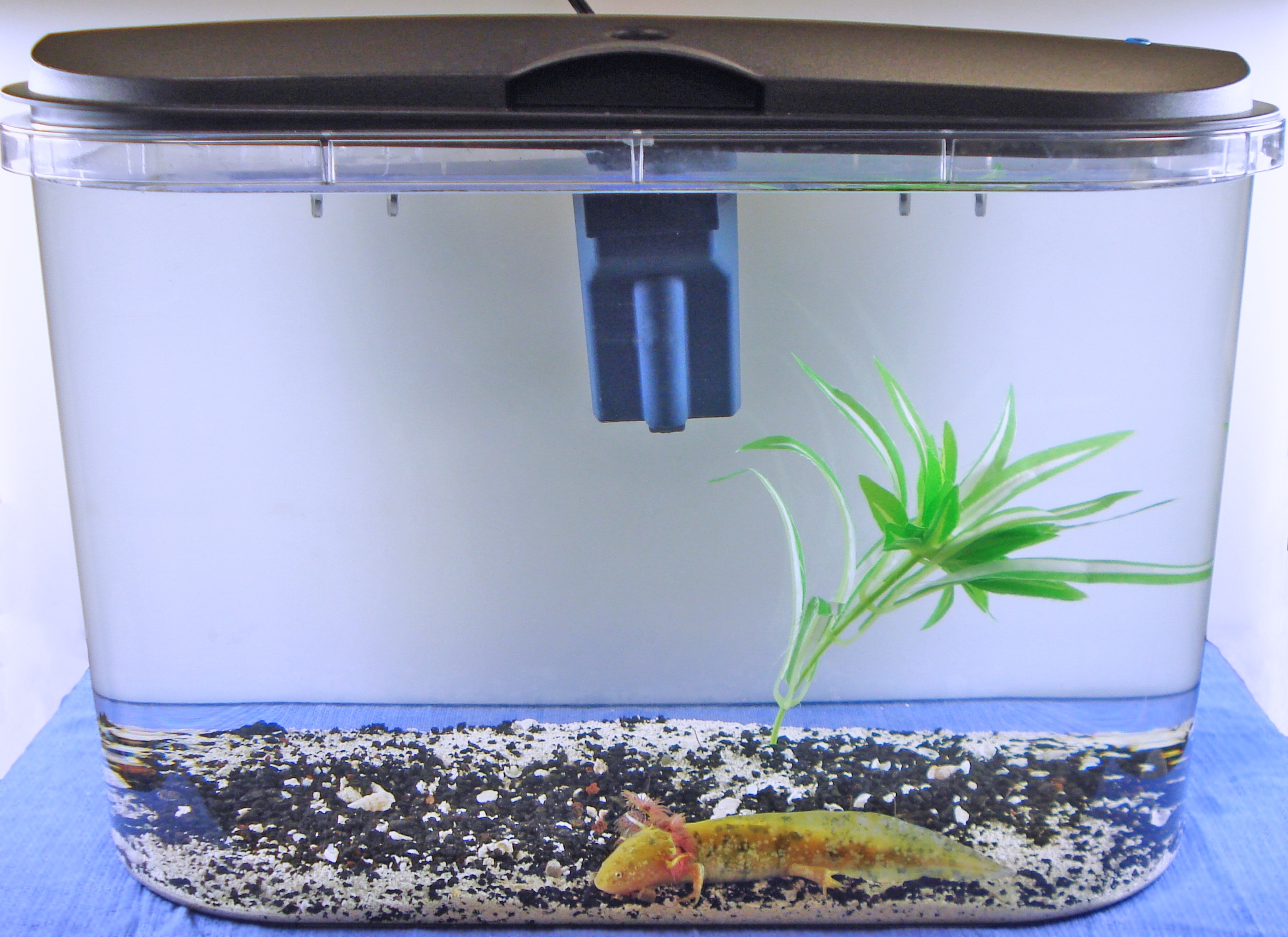
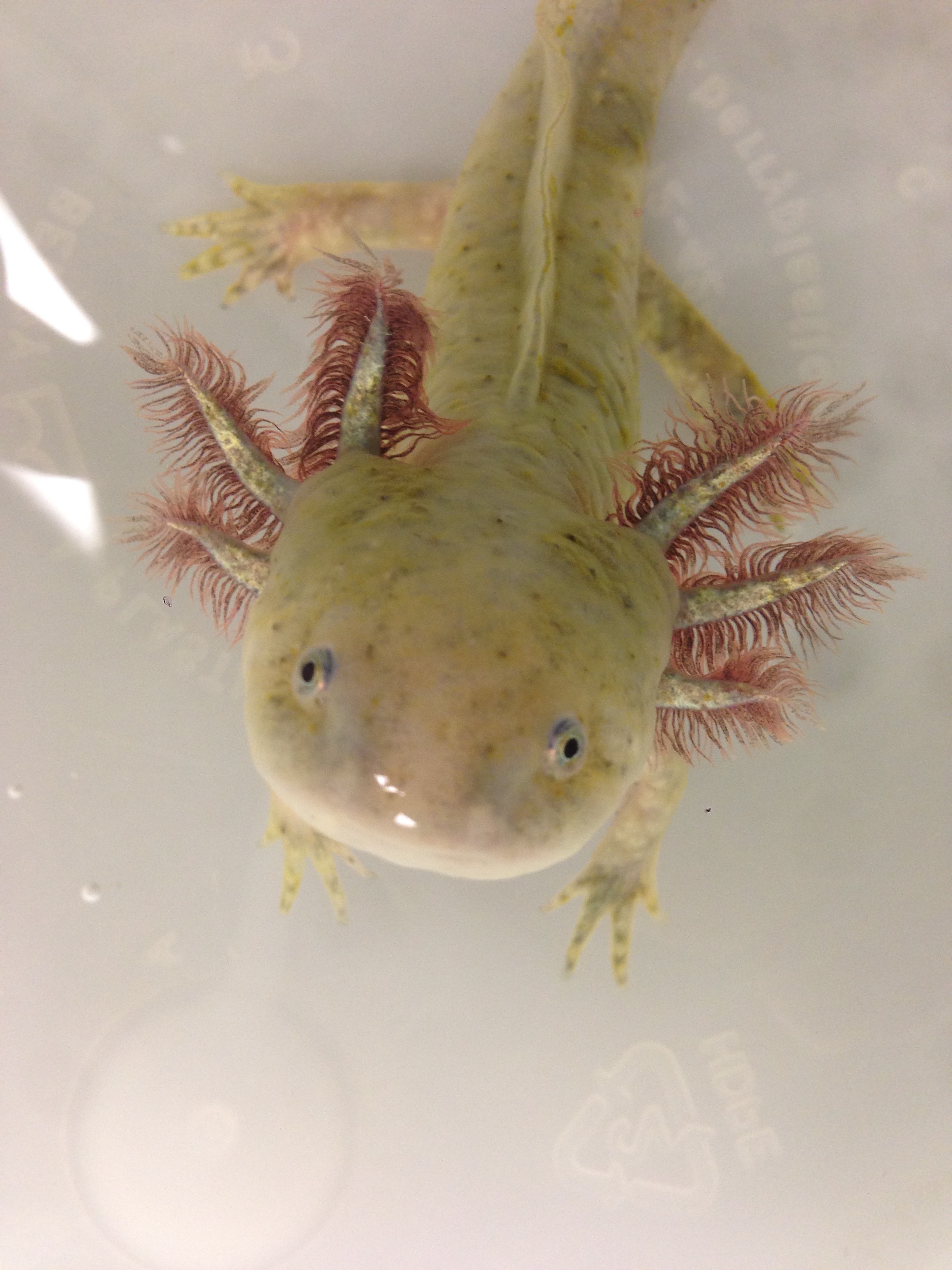

Aquaria Options
Axolotl Biology
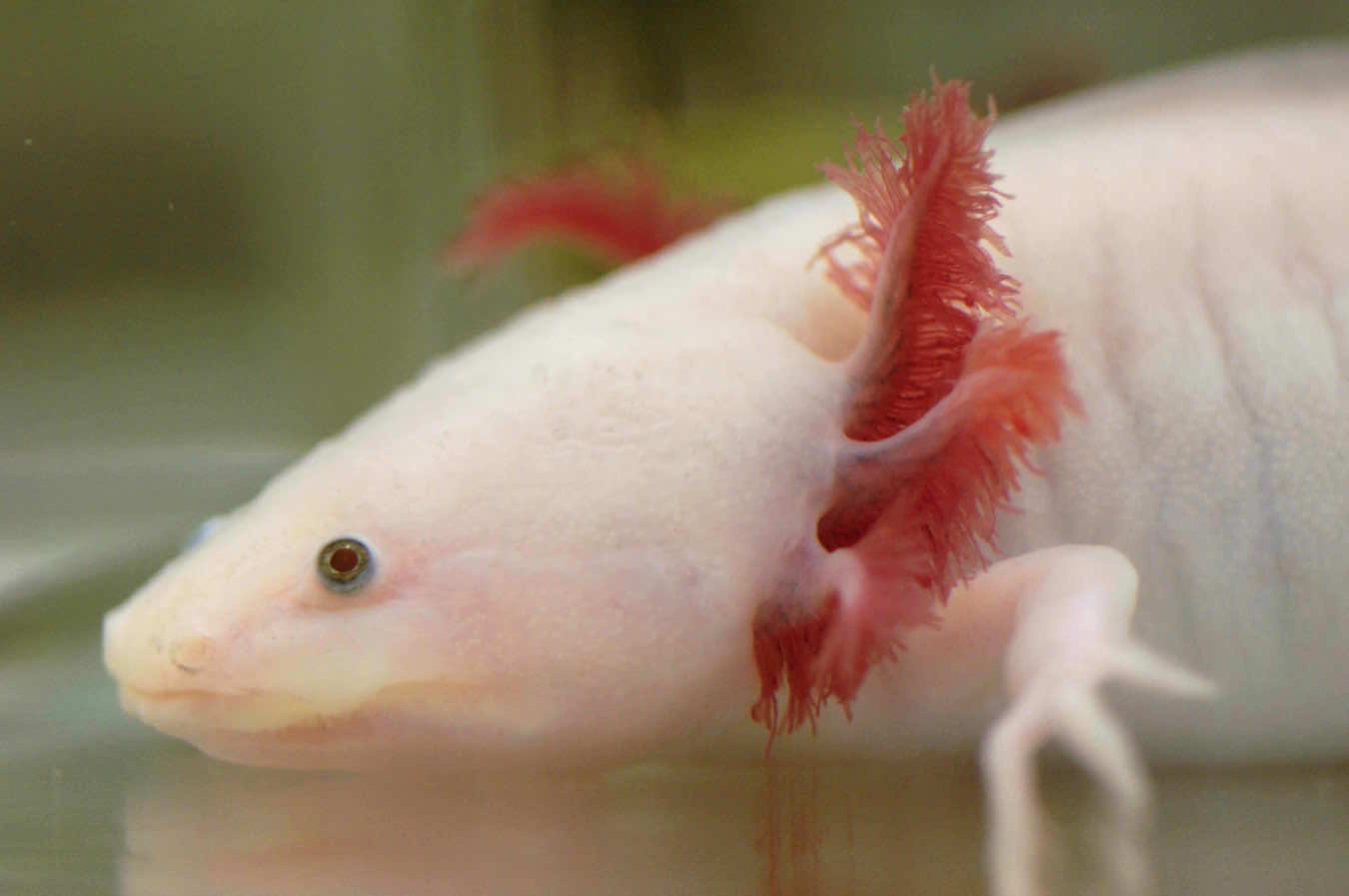
This is the most flexible option, chose among a white, albino, melanoid, or wild type colored axolotl. Use your axolotl to learn about axolotl behavior, husbandry, development, and anatomy. Additionally, discuss evolution, ecology and the axolotl’s precarious current situation in nature – the axolotl and many amphibians are on the brink of extinction. The axolotl provides an unparalleled opportunity to emphasize the importance of conserving threatened ecosystems and species.
Eyelessness
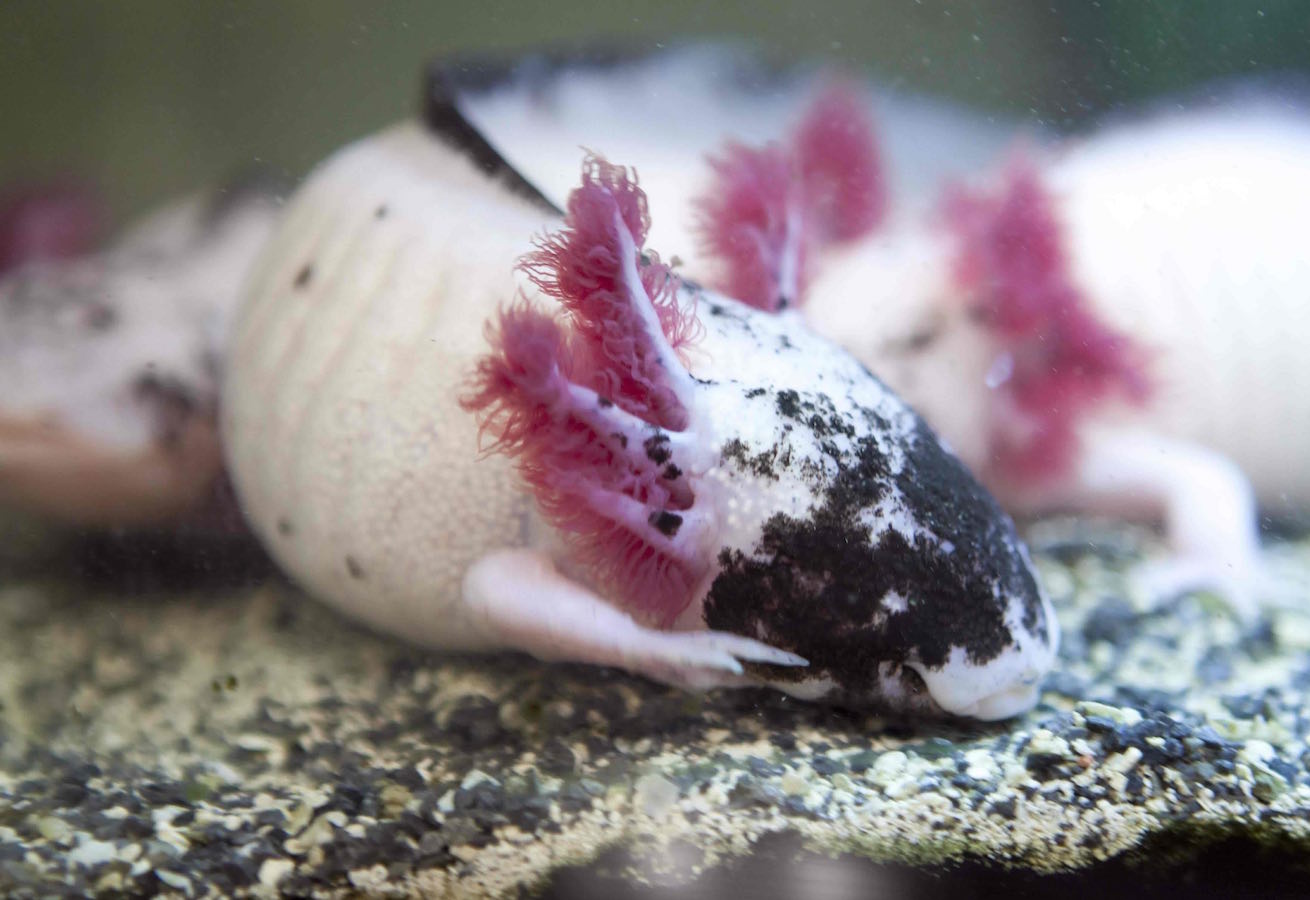
This option comes with an amazing eyeless axolotl that provides a focus for learning about the developmental and genetic basis of eyeless animals, and eye disorders in humans. Why are there eyeless animals in natural populations and how do scientists discover or make eyeless animals in the laboratory? This option provides a great opportunity to delve into the axolotl literature and have students develop hypotheses for axolotl eyelessness. The AGSC will share information about the genetic basis of this amazing trait.
Transgenesis
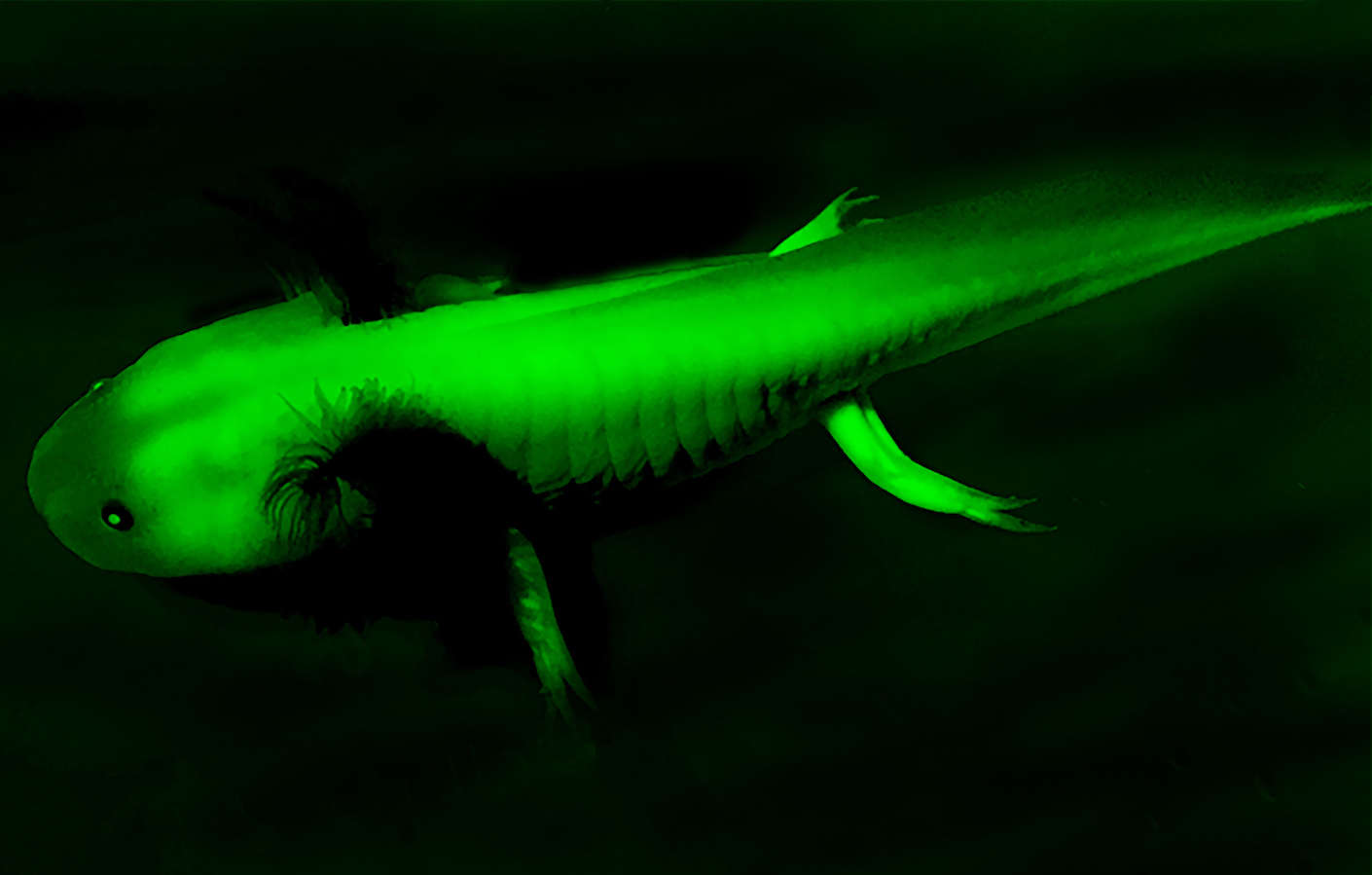
This option comes with a seemingly normal colored white axolotl. However, unobservable to the human eye under natural light, this axolotl emits a glowing fluorescent color. Chose between a Green or Red fluorescent axolotl and use this animal to motivate discussions about transgenic methods and applications in biological research.
Genome Editing
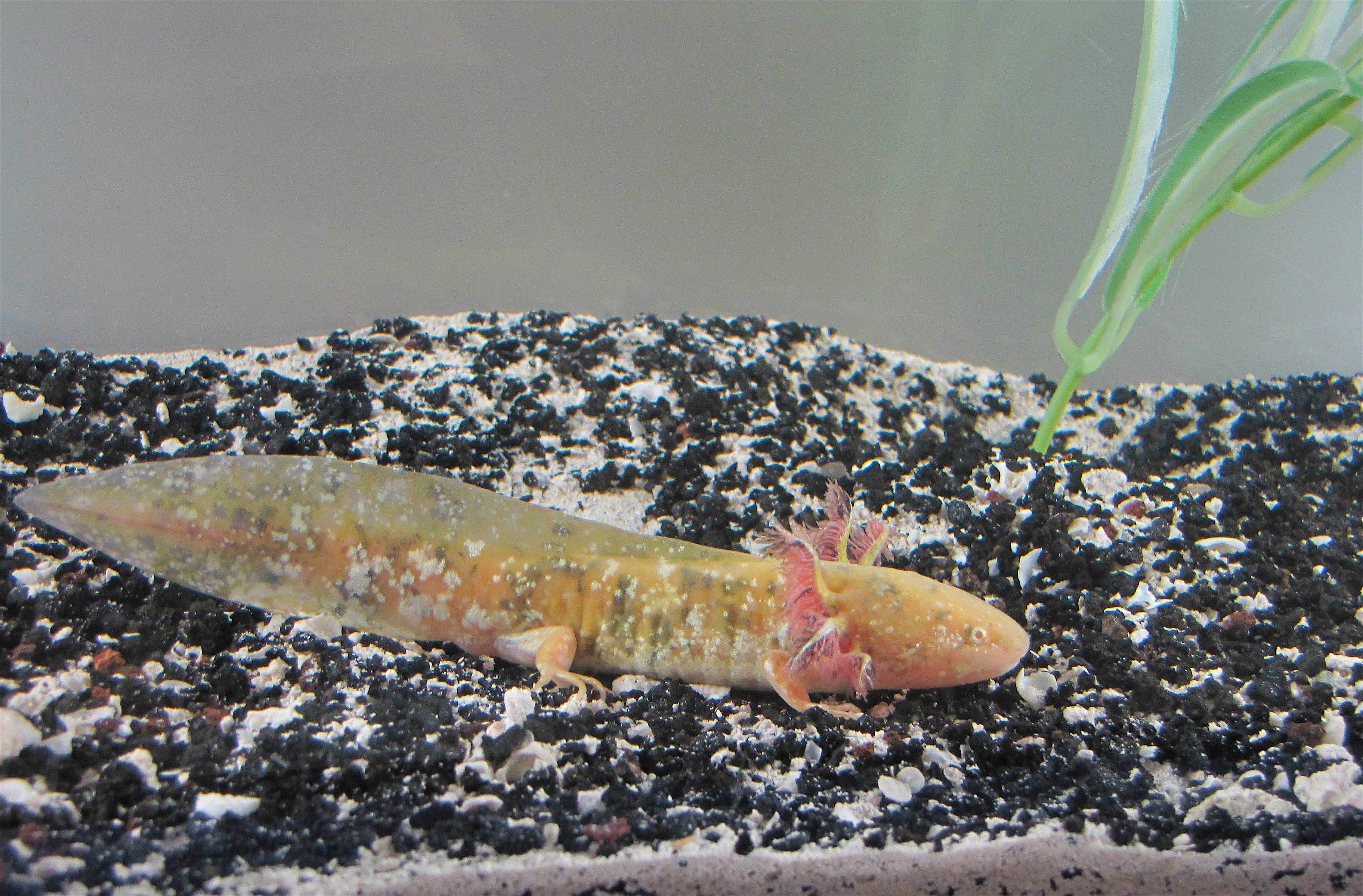
This option comes with a wild type axolotl that has a very beautiful, mosaic color pattern. The color pattern was engineered by editing the tyrosinase gene sequence in the axolotl genome using either CRISPR/CAS9 or Transcription Activator-Like Effector Nuclease (TALEN) technology. The unusual color pattern provides a starting point to delve into the biology of axolotl pigmentation, the genetic basis of albinism, and cutting edge approaches in modern biology that are being used to edit genomes.
Ordering Embryos....
Anyone ordering embryos needs to give us at least a one week notice as to when they need the embryos. This way we can plan for the matings that are needed to fulfill the orders.
Also, we do not breed our adult axolotls during the month of August. Even with our year-round temperature-controlled rooms, we experience a seasonality when it come to the sucess of our matings. Therefore, we give our breeding stock a break during the month of August. We will resume breeding the first full week of September.
Thank you for your understanding and cooperation!